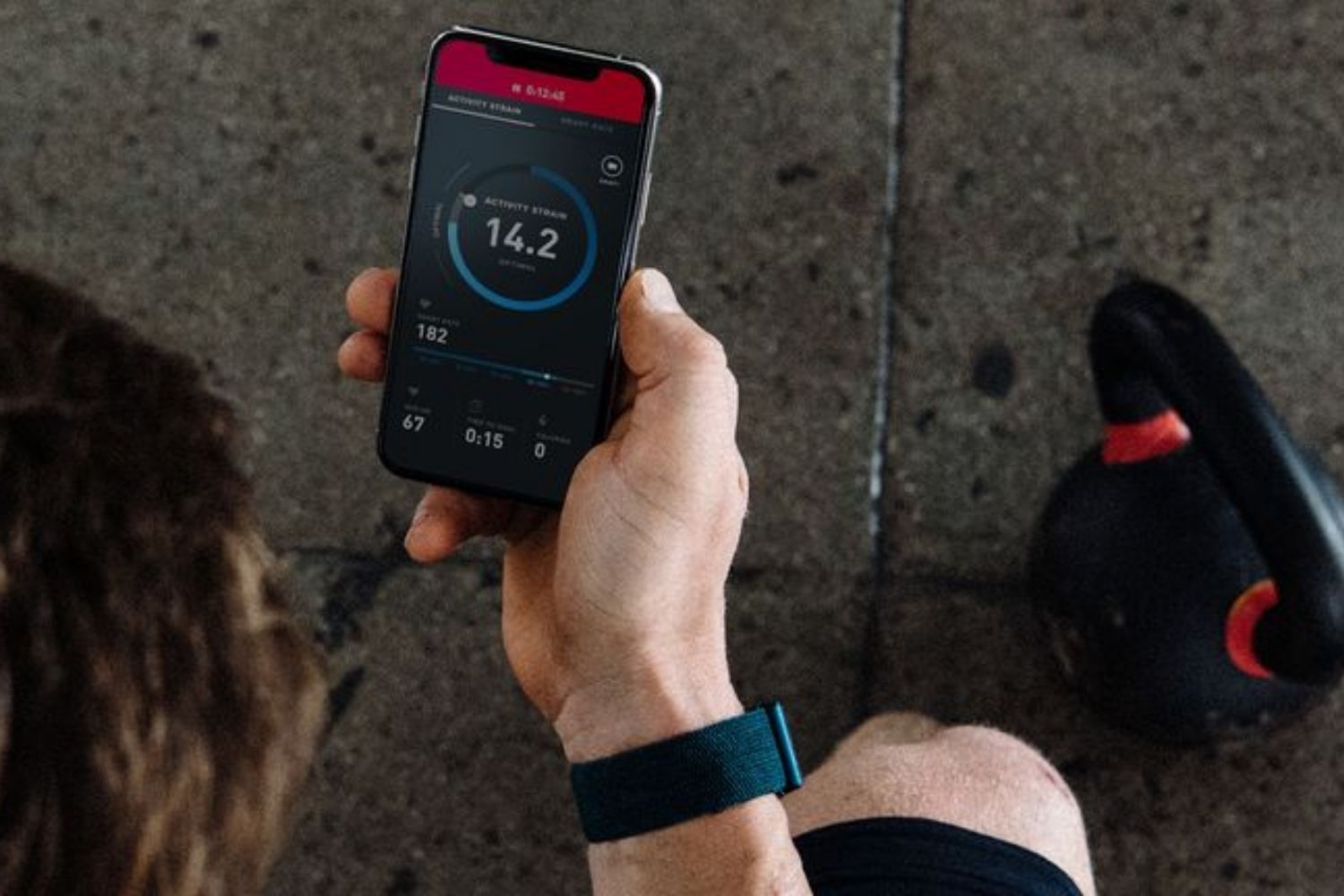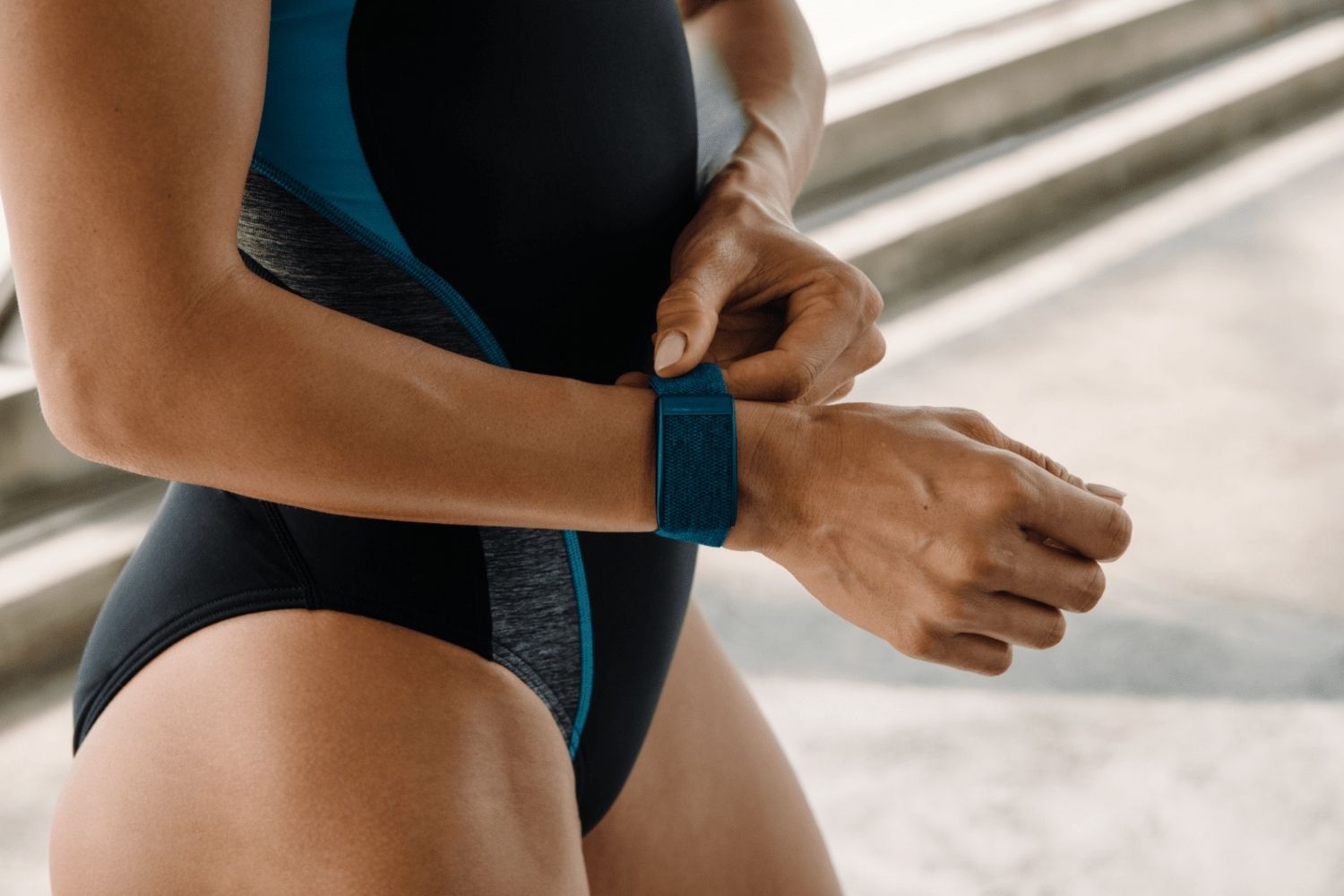When it comes to wearables in 2021, the devices now taking up real estate on your wrist have come a long way from simply telling the time and counting steps. From those that read your blood oxygen levels, to those capable of taking calls, sending emails and getting you out of a pinch when you realise you’ve left your wallet at home on the work commute, it’s safe to say that we expect the world of our wearables. There’s no shortage of options on the market when it comes to selecting a fitness-tracking device and it’s precisely this that makes choosing one so fraught with challenges. But in an already over-saturated market, Whoop stands out from the rest. The how and why comes down to the fact that Whoop is far more than a device that tracks fitness alone. Rather, it tracks your recovery too, making it the ideal wearable for those looking to get a comprehensive idea of their fitness, as well as the athletes amongst us that are looking to perform at our peak.
For athletes, the importance of recovery has long been known but as many of us discovered during lockdown as we traded an office space for a makeshift desk in our own bedroom, the need for restful sleep can’t be underestimated. As well as allowing for improved recovery, it’s during recovery that our body heals and repairs itself, decreasing the risk of potential injury while simultaneously preparing for the next training load. To ignore recovery is to undo many of the benefits gained from the training itself and it’s here that Whoop excels. For a runner looking ti race in the upcoming week, Whoop will help perfect exercise, sleep and recovery to ensure you hit your “peak” performance on the day of the event.
With this in mind, it’s not hard to see why the brand boasts athletes like LeBron James and Olympic stars as devoted users. The latest iteration of Whoop – the Whoop Strap 3.0 – provides even further health metrics like heart rate variability, which serves as a key indicator of stress and fitness levels. So, just how does Whoop work and is it worth the hype? Here we break down everything you need to know about Whoop’s fitness tracker and the membership behind the device.
What is Whoop?
As a fitness tracker, Whoop measures sleep, workout intensity and how your body recovers from your workouts, all while providing advice on how to improve in these very areas. Using HRV, heart rate and other metrics, it assesses sleep quality, workout strain and recovery, thanks to LEDs and photoplethysmography. But unlike other wearables that have busy graphics and a difficult-to-decipher screen broadcasting all this information, Whoop differs in that all of the information is accessed and viewed on the app. The strap itself isn’t a regular watch or an extension of your phone that will be buzzing with notifications. Instead, it’s sleek and straightforward: a stretchy knit elastic band that you can change based on colour/design preference.
Giving you information on workout strain and sleep quality, Whoop essentially feels like having a personal trainer or devoted coach in your corner. It’s not a step count for the masses that individuals simply try to target, but information that is specific to you and your individual goals and recovery needs. With five days battery on a single charge, you’ll wear Whoop constantly – something that’s enabled with the battery pack that slides on and off for simple charging.
When starting out, it takes two weeks of using Whoop to get your baseline stats, from which point you will receive more personalised information and recommendations in the app. Setting up the strap can prove vexing, and was something we admittedly struggled with. Thankfully, there is a YouTube video that, if followed closely, makes it a lot easier.
Sleep
As well as analysing how long you sleep, the sleep-tracking function of Whoop also looks at how long you spend in each sleep stage and how restful your sleep is – information that proves invaluable when it comes to aiding recovery and preventing injury. Thanks to the app’s “Sleep Coach,” you can get a suggestion of how many hours you should sleep based on how you want to feel or train the next day. For instance, if you want to simply “get by,” the hours of sleep needed are far less than those needed to “peak”.
Sleep suggestions are made based on your usual sleep schedule, your training load and recovery on previous days which is pretty incredible, as it means suggestions go far beyond the prevailing rhetoric of needing 8 hours sleep. Instead, having analysed your previous sleep patterns, the app will make predictions that sometimes even fall short of the standard, or require you to get more.
Recovery
If sleep isn’t a priority and your recovery is poor, there’s every likelihood that you’re on the path to injury, something many athletes learn the hard way. When recovery, resting heart rate or sleep quality declines, Whoop signals that you need more rest or need to back off on training intensity. This is calculated through the recovery score, which factors in how well you slept and your strain from the day before. The recovery percentage is colour-coded to signal the state you’re in and what you can take on for the day. These are as follows:
- Green – ready to take on a tough workout
- Yellow – somewhat recovered, but not enough to train intensely
- heart rate, sleep and other metrics suggest body is still in a recovery state. You should take a rest day on red days.
Strain
Sometimes you’re really feeling it and when it comes to that extra push in a workout, you’re all too willing to abide. On other days however, our body can’t quite catch up to the mind. We’re fatigued, muscles are sore, and things aren’t moving quite like they used to. Whoop does an excellent job of reminding us all that we can’t (and shouldn’t) be working out at absolute intensity every day. By factoring in the energy exerted during a workout, Whoop not only calculates how difficult a workout is, but how our body responds to stress, work and travel. The strain we encounter each day isn’t graded as good or bad, but it does serve as a metric Whoop uses to then recommend the amount of recovery needed the night before.
On a scale of 1 to 21, Whoop grades strain through the “Strain Coach” feature within the app as well as getting a score at the close of the day, it also offers a real-time calculation while working out. The goal here is to give users the knowledge to tailor their workouts effectively to improve fitness while avoiding the burnout that can come with going too hard, too often.
How much is it?
Whereas other wearable fitness trackers might see you fork out half your savings, Whoop offers a pretty unique offer. Rather than pay for the device outright, you purchase a membership that costs $30 USD a month. You actually aren’t able to purchase the device as a one-time purchase, but through the membership you get the tracker and band at no extra cost, except for any additional bands you might want to throw on.
That said, there is a six-month commitment when you purchase the membership, so you will need to pay the complete six months before cancelling. After this point, you can keep the tracker, but it won’t work. You also get a 30-day grace period to return the tracker once you start the membership.
Key takeaways
The key benefit of Whoop is its tailored advice. Anyone can count their steps and burn a certain amount of calories, but few of us can really dial into our training and the recovery we are getting each night. By providing greater insight into our body’s ability to take on stress and recover, Whoop has done the extraordinary and given us all a tool previously only afforded to athletes. Now, we’re not just getting fit, but doing so holistically by avoiding overtraining.
There are plenty of devices that track heart rate, steps, and exercise patterns, but few of them can provide an insight into sleep, stress, nutrition and hydration. Whoop, then, stands out from the rest for this very reason. Those who want a visual display on their watches might find it quite a hard adjustment, but with its sleek design, the Whoop device is something you’ll wear constantly.
Through the strain and recovery scores, you can allow yourself the breathing room to adjust training accordingly and for those who find it hard to listen to your body, it’s particularly beneficial to see. Similarly, the Sleep Coach’s recommendations based on if you want to “Get by”, “Perform” or “Peak” are an integral part of performance and will help you get closer to your fitness goals. It’s a tool athletes and high-performers will love, and those who thrive on detailed analysis will enjoy. For the average hobby-jogger the details Whoop provides might be a little much, but given we’re living in a time of grave uncertainty and high stress, perhaps these are the metrics we should be paying closer attention to.
For more details and information, visit the official Whoop website here.




















